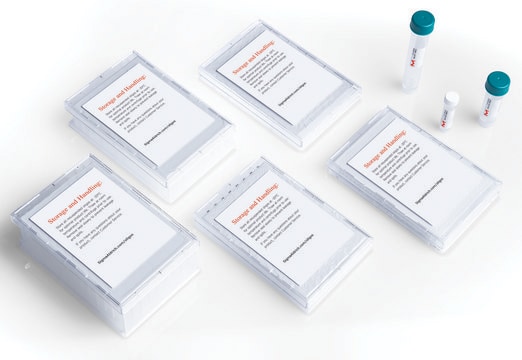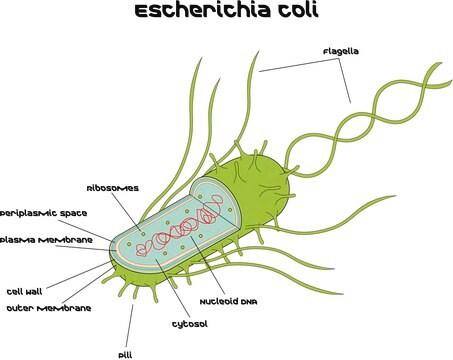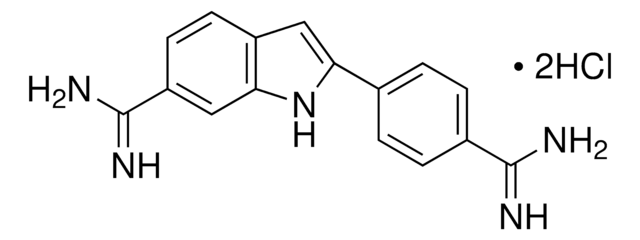추천 제품
제품명
BL21(DE3) Electrocompetent Cells, for protein expression
생물학적 소스
Escherichia coli
Grade
Molecular Biology
성장 모드
adherent or suspension
형태학
rod shaped
기술
microbiological culture: suitable
세포 형질전환
competent cell type: electrocompetent
transformation efficiency: ≥5 × 109 cfu/μg
배송 상태
dry ice
저장 온도
−70°C
일반 설명
The BL21(DE3) Electrocompetent Cells are the first to offer high efficiency cloning and high level protein expression in the same cell.
Cloning efficiencies are increased 25-1,000 fold relative to other preparations of BL21 cells, which is essential for construction of complex expression libraries.
Genotype
F – ompT hsdSB (rB- mB-) gal dcm (DE3)
Cloning efficiencies are increased 25-1,000 fold relative to other preparations of BL21 cells, which is essential for construction of complex expression libraries.
Genotype
F – ompT hsdSB (rB- mB-) gal dcm (DE3)
특징 및 장점
The unprecedented transformation efficiency of the BL21(DE3) Electrocompetent Cells (> 5 × 109 cfu/μg) eliminates the need for plasmid transfer from the cloning strain to the expression strain, saving days of work in a typical cloning and expression experiment
성분
- BL21(DE3) electrocompetent cells
- pUC 19 transformation control DNA
- recovery medium for expression
관련 제품
제품 번호
설명
가격
Storage Class Code
10 - Combustible liquids
Julianne M Troiano et al.
eLife, 10 (2021-01-16)
Under high light, oxygenic photosynthetic organisms avoid photodamage by thermally dissipating absorbed energy, which is called nonphotochemical quenching. In green algae, a chlorophyll and carotenoid-binding protein, light-harvesting complex stress-related (LHCSR3), detects excess energy via a pH drop and serves as
Felix Nicolaus et al.
eLife, 10 (2021-02-09)
We follow the cotranslational biosynthesis of three multispanning Escherichia coli inner membrane proteins in vivo using high-resolution force profile analysis. The force profiles show that the nascent chain is subjected to rapidly varying pulling forces during translation and reveal unexpected
Salvatore Di Girolamo et al.
Microbial cell factories, 19(1), 170-170 (2020-08-29)
Miniaturization of biochemical reaction volumes within artificial microcompartments has been the key driver for directed evolution of several catalysts in the past two decades. Typically, single cells are co-compartmentalized within water-in-oil emulsion droplets with a fluorogenic substrate whose conversion allows
프로토콜
BL21(DE3) Electrocompetent Cells are provided in 25 μL aliquots, sufficient for one reaction. Transformation is carried out in a 0.1 cm gap cuvette. Optimal settings for electroporation are listed in the table below. Note that alternate settings result in transformation efficienes about 20-50% lower. Typical time constants are 3.5 to 4.5 msec.
자사의 과학자팀은 생명 과학, 재료 과학, 화학 합성, 크로마토그래피, 분석 및 기타 많은 영역을 포함한 모든 과학 분야에 경험이 있습니다..
고객지원팀으로 연락바랍니다.






